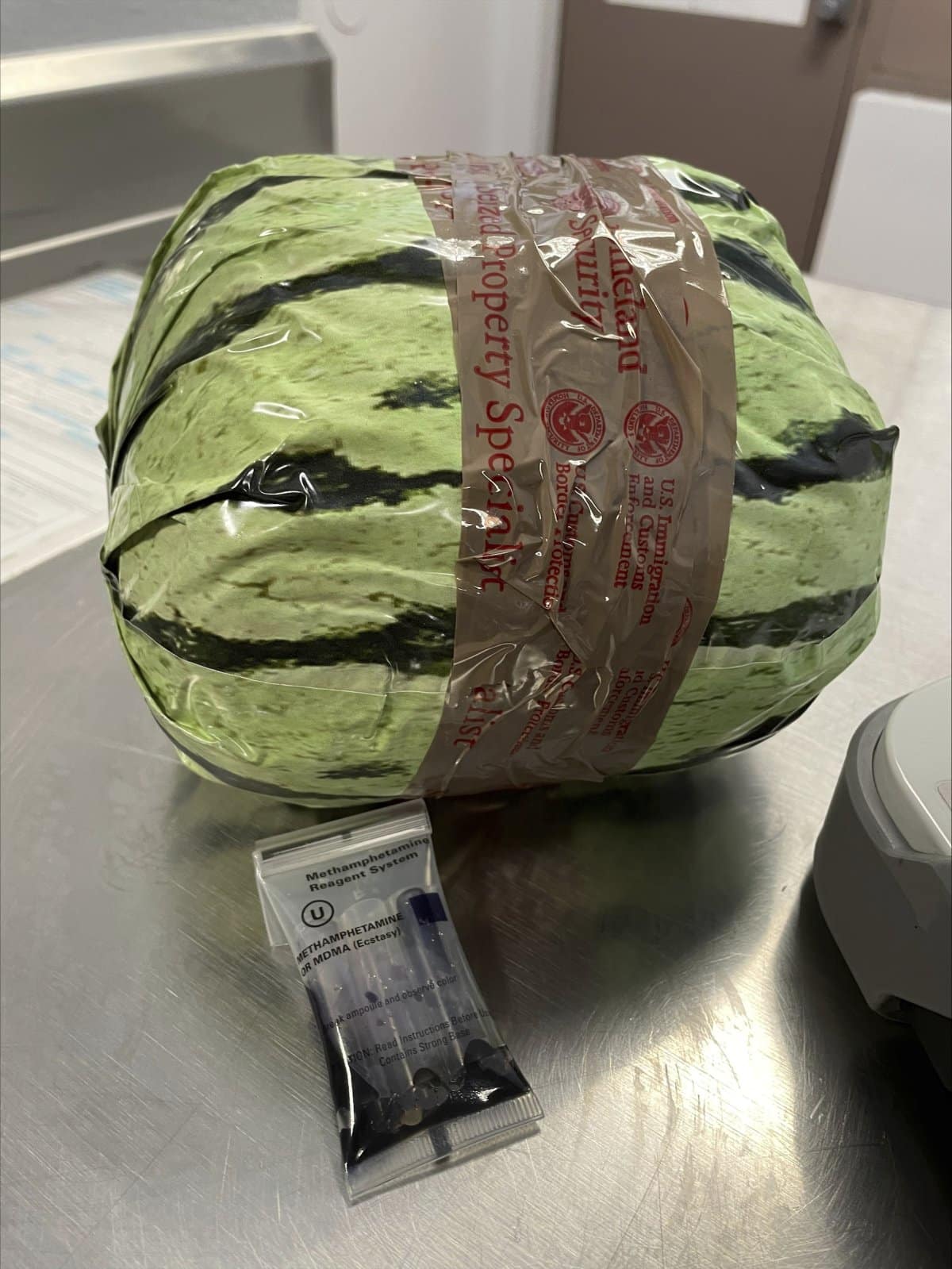On a sweltering day during the hottest June on record in Phoenix, a 38-year-old man collapsed under a freeway bridge, and a 41-year-old woman was found slumped outside a business.
Both had used methamphetamine before dying from a mix of soaring temperatures and stimulants.
Meth is increasingly showing up as a factor in heat-related deaths across the U.S., according to an Associated Press analysis of data from the U.S. Centers for Disease Control and Prevention.
Death certificates indicate that about one in five heat-related deaths in recent years involved methamphetamine. In Arizona, Texas, Nevada, and California, officials found the drug in nearly a third of heat deaths in 2023.

A fake watermelon, used to disguise a shipment of methamphetamines, is shown after a bust by U.S. Customs and Border Protection on August 16, 2024, in Otay Mesa, California. Meth is showing up more often as a factor in the deaths of people who died from heat-related causes in the U.S.
U.S. Customs and Border Protection/AP Photo
As a stimulant, methamphetamine raises the body temperature, impairs the brain’s ability to regulate heat, and makes it harder for the heart to cope with extreme heat.
Bob Anderson, chief of statistical analysis at the National Center for Health Statistics, noted that a number of outside factors like alcohol and opioid use would add to the stress caused by raised body temperatures , “But meth would be the one that you would be most concerned about.”
The spike in meth-related heat incidents coincides with climate change. There has been an increased risk of heat-related fatalities in places like Phoenix and Las Vegas as temperatures have soared. Phoenix endured triple-digit heat for 113 straight days, hitting 117 degrees Fahrenheit (47.2 Celsius) in late September.
“Putting on a jacket can increase body temperature in a cold room. If it’s hot outside, we can take off the jacket,” said Rae Matsumoto, dean of the Daniel K. Inouye College of Pharmacy at the University of Hawaii. “But people using the stimulant in the outdoor heat can’t take off the meth jacket.”
These fatalities are particularly common in the Southwest, where meth overdoses have risen since the mid-2000s. In Maricopa County, about two-thirds of the 645 heat-related deaths documented last year involved substances like street drugs and alcohol. Meth was detected in roughly three-quarters of these cases.
In metro Las Vegas, heat contributed to 294 deaths last year, with 39 percent involving drugs and alcohol. The U.S. Drug Enforcement Administration notes in its 2024 National Drug Threat Assessment that 31 percent of all drug-related deaths in the U.S. are now caused by stimulants, primarily meth. Preliminary CDC data reveals over 17,000 stimulant-related deaths in the first half of 2023.

Dr. Aneesh Naran stands outside the Banner University Medical Center emergency room after a shift in Phoenix. “All of your normal physiological ways of coping with heat are compromised with the use of methamphetamines,” Naran said.
Matt York/AP Photo
Dr. Aneesh Narang, an emergency medicine physician at Banner University Medical Center in Phoenix, said that “all of your normal physiological ways of coping with heat are compromised with the use of methamphetamines.”
This summer, most heat stroke patients in his hospital had used street drugs, mainly methamphetamine.
Because of its proximity to the U.S.-Mexico border, Phoenix serves as a “source city” for smuggled meth, said Detective Matt Shay of the Maricopa County Sheriff’s Office. U.S. Customs and Border Protection seized about 164,000 pounds of meth last fiscal year, up from 140,000 pounds the previous year.
People who use drugs may not be welcomed at cooling centers. A better solution, according to Stacey Cope of the harm reduction nonprofit Sonoran Prevention Works, is to lower barriers to entry so that those most at risk “are not expected to be absent from drugs or leave during the hottest part of the day.”
This article includes reporting from The Associated Press






